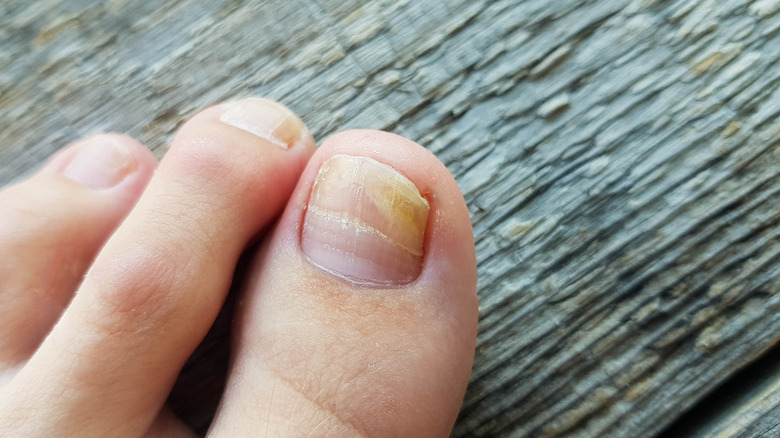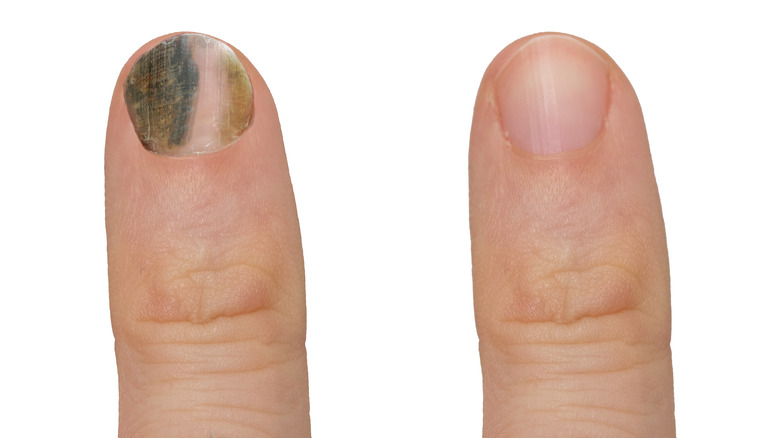How To Tell The Difference Between Nail Mold And Fungus
It can be an embarrassing problem if your nails have become discolored, thick, or crumbly because of nail fungus or nail mold (via Mayo Clinic). You may even be tempted to hide them with a coat of nail polish or artificial nails or attempt wearing socks or gloves to keep them out of sight. Unfortunately, nail infections can be a difficult and stubborn condition to cure so you may be stuck with your unsightly nails for longer than you'd like.
It's important to get the correct diagnosis before choosing how to treat your nail infection. You will need to determine just what is causing your infection so that you can use a medication that targets that cause. In addition, prescription medications may be required for you to get the best result (via Mayo Clinic). Often, the appearance of your nails will give you a clue about just what type of infection you are dealing with.
Nail mold or nail fungus?
Nail fungus, or onychomycosis, usually starts with a small yellow or white spot under the tip of your nail, according to the Mayo Clinic. However, as it begins to invade deeper into the nail, it can cause the nail to turn yellow, grow thicker, and begin to crumble. Eventually, the nail may begin to separate from the nail bed. It can affect only one nail or spread to others. It's actually caused by the same fungus that causes athlete's foot and develops under moist conditions like when you wear sweaty socks for long periods of time. People who are immunocompromised, have diabetes, have had recent surgery or injury to a nail, have poor circulation, or have psoriasis may be more prone to developing a fungal nail infection (via the American Academy of Dermatology Association).
According to Dermatology Advisor, nail mold is not even really mold. It's actually caused by a type of bacteria called Pseudomonas aeruginosa (P. aeruginosa). As with a fungal infection, people who develop nail mold might have had some sort of trauma to their nail that allowed the bacteria to penetrate the nail or prolonged exposure to moist conditions. Nail Magazine noted that unlike the yellow or white color associated with a fungal infection, P. aeruginosa gives nails a green or black discoloration, causing people to give it the nickname "green nail syndrome."


